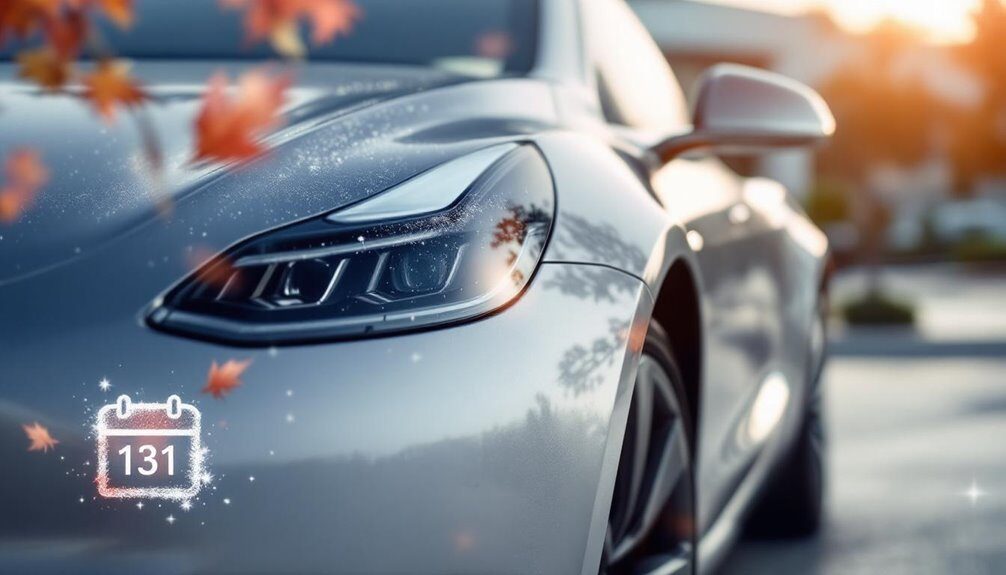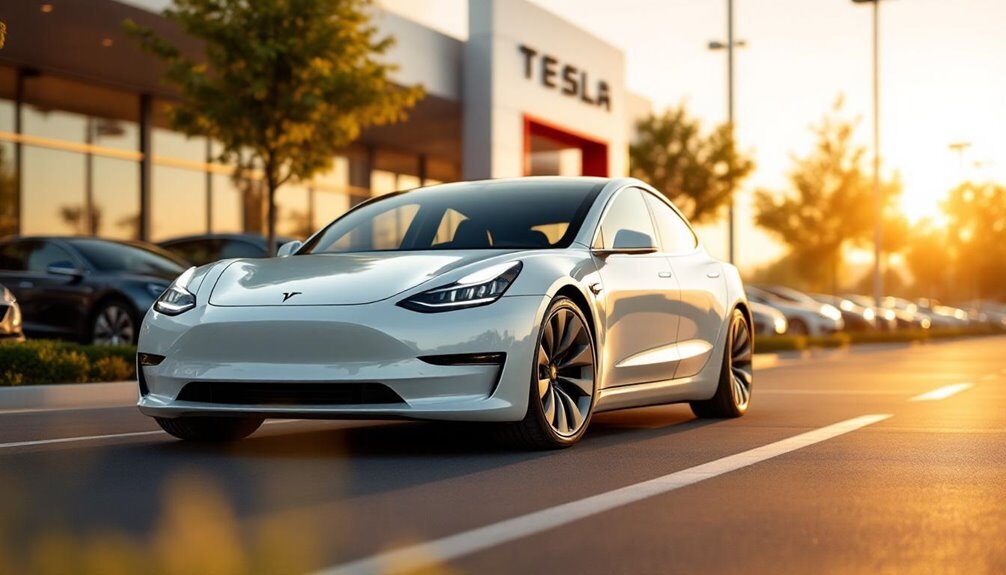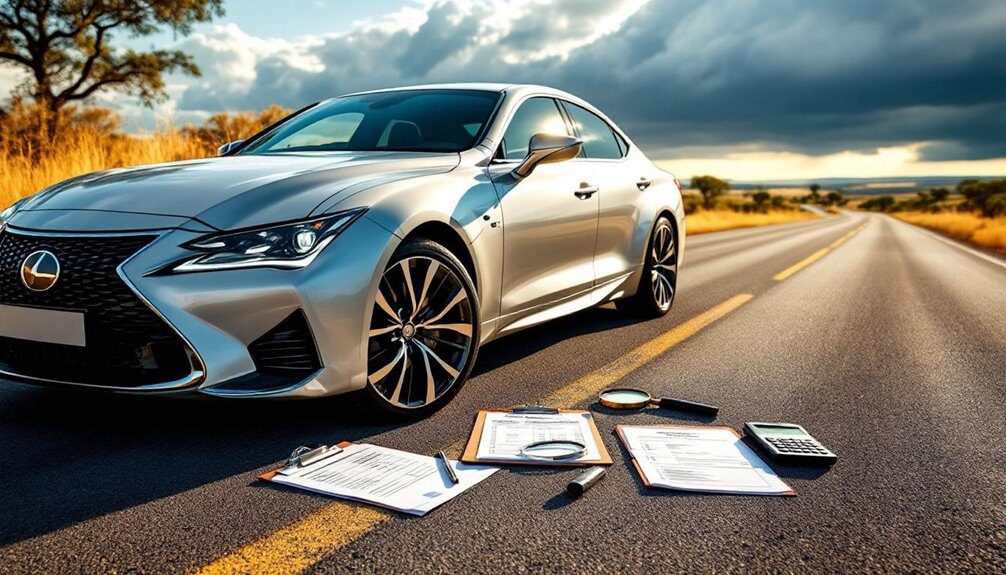You’re looking at Suzuki Swift, Toyota Vitz, and Renault Kwid if you want to stop haemorrhaging money on maintenance in South Africa—these models’ll run you under R4,500 annually, which is basically the budget-car sweet spot. Japanese competitors like Toyota consistently deliver lower repair rates the older they get. Parts? Dirt cheap and everywhere. Factor in fuel efficiency around 4.2–5.1 L/100km, solid warranty coverage, and you’ve got yourself a genuinely affordable ride. Stick around to see how these stack up against each other.
Top Budget-Friendly Models for Low Maintenance
When you’re shopping for a used car in South Africa, you’ve probably noticed that maintenance costs can absolutely tank your budget—but they don’t have to. Suzuki models crush it on affordability. The Swift runs minor services at R1,010 and major ones at R2,200, keeping annual maintenance between R3,500–R4,500. The S-Presso? Same price tag. Then there’s the Celerio—sips fuel at 4.4 L/100km without draining your wallet.
Toyota Vitz offers comparable costs with R1,010 minor services and impressive 4.6 L/100km efficiency. Renault Kwid delivers similar numbers with SUV styling thrown in. With a 5-year/150,000 km mechanical warranty, the Kwid provides extra peace of mind for budget-conscious buyers. The Kwid’s 4.7 L/100 km fuel consumption makes it particularly economical over extended ownership periods. Hyundai Grand i10 and Tata Tiago round out the crew, all featuring accessible service networks nationwide. Autobahn Motors in Paulpietersburg offers nationwide vehicle delivery, making it convenient to access quality used cars from these economical makes. Autobahn Motors partners with Tyremart for tyre services, ensuring affordable replacements and maintenance for these economical vehicles. These vehicles prove you don’t need deep pockets to own something reliable.
Understanding Maintenance Costs by Vehicle Age
You’ve found a cheap car—brilliant. Now comes the reality check: age matters.
Vehicles older than seven years? They’re maintenance money pits. You’re looking at frequent repairs, worn suspension, shot brakes, dodgy exhaust systems. Pre-2015 models cost more because parts aren’t readily available.
Meanwhile, cars aged three to six years still carry warranty coverage. Lucky them. Following manufacturer service schedules during this period prevents costly repairs and keeps your warranty valid.
High mileage accelerates everything—more servicing, more failures, more cash out your pocket.
Poor maintenance history? Forget it. That’s a ticking time bomb regardless of age.
Electrical systems fail constantly in six-year-old-plus vehicles. Tyres and batteries die faster. Scheduling regular battery maintenance checks helps catch issues before they strand you on the road. Professional technicians can diagnose electrical system problems before they become expensive failures.
The kicker: older vehicles with deferred maintenance tank in resale value, sometimes dropping 10–25% after major repairs.
Age isn’t just a number—it’s your maintenance bill.
Fuel Efficiency Comparison of Affordable Used Cars
When you’re hunting for a used car that won’t drain your wallet every time you fill up, you’ve got some legitimate options—the Suzuki Celerio sips just 4.2 L/100km and starts around R188,900, whilst the Renault Kwid undercuts it at R109,500 with comparable efficiency.
Your ranking here’s quite straightforward: compact hatchbacks under R200,000 typically land between 4.2 and 5.0 L/100km, hybrids like the Toyota Corolla Hybrid crush that at 3.5 to 4.3 L/100km (but yes, you’re paying R400,000-plus), and anything turbocharged splits the difference.
Bottom line—smaller engines and lighter frames win the fuel game, though you’ll trade some upfront cash if you want those hybrid figures. Regular routine maintenance keeps these efficient vehicles performing at their best over time. At Autobahn Motors, our experienced team can help you find the right balance between fuel efficiency and your budget.
Best Fuel Efficiency Models
Fuel efficiency cuts through the noise when you’re hunting for a used car that won’t drain your wallet at every petrol station. The Suzuki Celerio and Toyota Vitz are your efficiency leaders—both consuming just 4.2-4.6 L/100km. That’s genuinely impressive.
The Suzuki S-Presso undercuts them on price at R178,900 whilst still managing 4.4-4.9 L/100km despite its SUV styling. Not bad, honestly.
The Renault Kwid sits slightly thirstier at 4.7-5.1 L/100km but offers SUV-inspired practicality from R196,999.
Meanwhile, the Hyundai Grand i10 trades peak efficiency for balanced performance between 5.2-5.5 L/100km, starting around R224,900. You’re looking at real money saved on fuel here—the kind that actually matters monthly. When you’ve found the right fuel-efficient model, quality replacement parts from reputable suppliers ensure your vehicle maintains that efficiency over time. For assistance in selecting the perfect fuel-efficient used car that matches your budget and needs, consider reaching out to automotive care professionals who can guide your decision.
Running Cost Comparison Analysis
Picking the cheapest car to buy isn’t the same as picking the cheapest car to run—that’s where most people fumble. You’ll want to compare what you’re actually spending on oil, tyres, and parts across models.
| Model | Annual Parts Cost | Service Accessibility |
|---|---|---|
| Suzuki Swift | $197–$271 | High—widespread network |
| Hyundai Grand i10 | $200–$260 | Excellent—affordable parts |
| Toyota Vitz | $210–$280 | Superior—reliable availability |
Popular compact cars dominate here because parts sit on shelves everywhere. Mass availability means competitive pricing. You’re not hunting down obscure components or paying dealer markups. Routine stuff—oil, filters, tyres—stays genuinely affordable. The Suzuki S-Presso and similar models benefit from economies of scale. Basically, if thousands of South Africans drive it, you’ll catch a break on running costs. Professional tyre services like those offered in partnership with trusted providers ensure your tyres remain in optimal condition without unexpected costs. Don’t overlook the importance of regular brake maintenance to keep your maintenance costs predictable and your vehicle safe on the road.
Litre Consumption Rankings
Here’s where most people get it wrong—they eyeball the price tag and think they’ve nailed the cheapest option, then wonder why they’re haemorrhaging cash at the pump every month.
Fuel consumption rankings separate the winners from the wallet-drainers. You’ve got three tiers worth knowing:
- Hybrid champions: Toyota Corolla Hybrid dominates at 3.5–4.3 L/100km. Best-in-class, full stop.
- Compact petrol engines: Suzuki Celerio and S-Presso sit pretty between 4.2–4.4 L/100km. Real money-savers here.
- Mid-range players: Proton Saga, Nissan Magnite, and Hyundai Grand i10 clock 5.3–5.5 L/100km. Still solid performers.
The gap between a Celerio and a Corolla Quest? Nearly 2 litres per 100km.
That adds up fast when you’re driving real roads in eDumbe.
Service Plans and Warranty Coverage Explained
When you buy a used car, you’re not just getting the vehicle—you’re inheriting whatever warranty coverage (or lack thereof) came with it. Most used cars still carry a balance of warranty if they’re within the original 3–5 year or 100,000–150,000 km manufacturer window.
Used cars often come with remaining manufacturer warranty coverage if they’re within the original 3–5 year or 100,000–150,000 km window.
Here’s the catch: that coverage only sticks around if you service at approved centres. Skip that requirement? Goodbye, protection.
Entry-level cars like the VW Polo Vivo or Toyota Yaris keep service costs manageable—roughly R1,000 to R3,900 per service. Luxury models? You’re looking at double or triple that.
Independent workshops approved by the RMI often undercut authorised dealers by 20–40%, perfect if you’re outside warranty anyway. Bottom line: know what’s covered before that first breakdown hits.
Insurance and Monthly Ownership Expenses
You’re probably thinking insurance is just another line item, but here’s the reality: budget hatchbacks like the Suzuki Celerio and Toyota Vitz land you in lower insurance brackets, which means your premiums won’t tank your monthly budget.
Your actual ownership expenses—finance payments, insurance, fuel, maintenance—need to stay under R7,000–R8,500 monthly to make this whole thing work, which is doable if you’re smart about picking a used model that doesn’t bleed money.
The maths gets tight, yeah, but used budget cars eliminate that crushing monthly finance payment, freeing up cash you’d normally throw at a bank so you can actually afford to keep the thing running.
Insurance Brackets for Hatchbacks
Since you’re shopping for a hatchback in South Africa, let’s talk insurance—because yes, it’s something you’ve got to factor in.
Hatchbacks sit in sweet spot territory for premiums. You’re looking at:
- Third-party coverage: R70 monthly. Cheap. Basic. Limited protection, but your wallet won’t cry.
- Comprehensive insurance: R800–R1,400 monthly. The real deal. Covers theft, hijacking, accidents—everything.
- Starting premiums: Around R390 monthly for entry-level hatchbacks.
Models like the Suzuki Swift and Toyota Yaris won’t destroy your budget.
Lower Insured Declared Values mean lower premiums. Security features—airbags, ABS—actually matter here. They slash costs.
Your province matters too. Limpopo and Gauteng hit harder at R1,382 and R1,371.
But honestly? Hatchbacks remain genuinely affordable to insure. That’s the real draw.
Monthly Payment Affordability Ratios
So here’s the reality: your monthly car payment isn’t just about the instalment—it’s about the whole image. You’ve got insurance. Fuel. Maintenance. That’s your actual monthly burden.
| Expense Category | Monthly Cost |
|---|---|
| Car Payment | R3,000–R6,000 |
| Thorough Insurance | R600–R1,200 |
| Fuel | R1,500–R2,500 |
| Maintenance | R300–R600 |
Your total? Easily R5,000 to R8,000 monthly. That’s real. Most lenders cap car payments at 15% of your gross income. For a R28,220 salary, that’s roughly R4,233. But factor in insurance—it bumps your expenses up 10–25%. Suddenly, that affordable payment feels tighter. Your total monthly car expenses shouldn’t exceed 25% of gross income. Do the maths. For R28,220, that’s R7,055 maximum. Insurance alone can change everything.
Total Ownership Cost Breakdown
When you’re hunting for the cheapest used cars to maintain, here’s what actually matters: insurance and monthly ownership expenses will make or break your budget.
You’ve got real costs stacking up every single month. Here’s the reality:
- Compact hatchbacks like the Toyota Vitz run R1,800–R2,500 monthly for everything combined—insurance, fuel, servicing, repairs.
- Mid-size hatchbacks such as the Polo Vivo push R2,000–R2,800 monthly because they’re pricier to insure and service.
- Saloons like the Proton Saga drain R2,200–R3,000 monthly, eating deeper into your wallet.
Japanese brands? They’ll save you money. Toyota and Suzuki models cost less to insure because they’re reliable and harder to steal.
Older cars? Forget about it—ten-plus-year-old vehicles spike your costs to R2,500–R3,500 monthly thanks to constant repairs. Budget accordingly.
Reliability Ratings and Long-Term Durability
A used car’s true cost doesn’t hit your wallet on day one—it sneaks up gradually, year after year, in service bills and repair invoices.
Here’s the reality: years one through three? You’re golden. Only 1.89% to 3.51% chance of major repairs, with annual maintenance sitting between R267–R384. Pretty sweet.
But years four through six shift the game. Repair probability jumps to 6.20% to 9.99%. Suddenly you’re spending R500–R747 annually.
Then years seven through ten arrive like an unwelcome relative. That’s when 10.78% to 18.29% of vehicles need serious work, costs climbing to R863–R979 yearly.
Most cars stay economically viable through year six. After that? You’re gambling on whether that engine’s got another good year left.
Resale Value and Investment Protection
When you’re hunting for a used car that won’t bleed you dry, resale value matters just as much as the maintenance bill—turns out your cheap-to-own ride could actually hold its value better than you’d expect. Models like the Volkswagen Polo Vivo and Toyota Vitz lose only 35–45% of their value over three years, whilst their competitors tank faster, so you’re not necessarily throwing money away the second you drive off the lot.
Keep that service history intact, stay under 15,000 km annually, and avoid accidents, because those factors alone can protect 10–25% of your car’s resale value.
Strong Resale Value Leaders
- Toyota Vitz dominates the secondhand market with Toyota’s rock-solid reputation and consistent demand
- Suzuki Swift punches above its weight with competitive pricing that keeps buyers interested
- Hyundai Grand i10 attracts resale buyers thanks to affordable, accessible parts
These aren’t accidents. Strong resale value comes from brand reliability, affordable maintenance costs, and fuel efficiency that actually matters.
You’re basically future-proofing your wallet. Below R230,000? These models stay competitive. They’ve got dealer networks across South Africa backing them up. That’s not fluff—that’s real owner confidence. Buyers know these vehicles won’t bleed them dry later.
Depreciation Rates by Model
Your car’s resale value isn’t some mysterious force—it’s maths.
Different models tank at wildly different rates. Compact hatchbacks like the Hyundai i20 lose 25–30% over three years. Small saloons? Slightly worse at 30–35%. Mid-size SUVs hit harder—35–40% depreciation. Luxury saloons? They’re brutal. BMW 3 Series and Mercedes C-Class shed 40–50%.
| Model Type | 3-Year Depreciation |
|---|---|
| Compact Hatchbacks | 25–30% |
| Small Saloons | 30–35% |
| Mid-Size SUVs | 35–40% |
| Luxury Saloons | 40–50% |
Brand matters. Toyota, Hyundai, Kia—they’re depreciation killers in the best way. High mileage accelerates the bloodbath; low-mileage vehicles retain 5–10% more value. Fuel efficiency helps too. Spare parts availability? That’s your secret weapon against value collapse.
Long-Term Investment Protection
Buying a used car isn’t just about finding something that runs—it’s about protecting your money. Your choice matters. Models like the Toyota Corolla and Honda Civic hold value remarkably well because they’re reliable and everyone wants them. That’s not coincidence.
Here’s what actually protects your investment:
- Complete service history documentation—vehicles with full records command 10-15% higher resale prices than those lacking paperwork
- Strong parts availability networks—models like Suzuki Swift with accessible, affordable components attract more buyers
- Established service infrastructure—nationwide networks guarantee consistent maintenance records that enhance resale appeal
Extended warranties through third-party providers like Hippo add another layer of protection. Your future self will thank you when resale time comes. Better documentation means better money back.
Spare Parts Availability and Service Accessibility
When you’re hunting for a cheap used car that won’t drain your wallet at the workshop, spare parts availability matters. Models like the Suzuki Swift, Toyota Vitz, and Hyundai Grand i10 have excellent local parts support—no waiting weeks for obscure components. These cars are everywhere in South Africa, so manufacturers stock parts aggressively. Common wear items like brake pads and filters? Dirt cheap and instantly available.
The Suzuki S-Presso and Swift earn “Excellent” ratings for parts accessibility, cutting repair downtime drastically. Toyota’s massive dealer network means Vitz owners rarely scramble for components. Even the newer Renault Kwid benefits from expanding distribution.
Service centres are scattered across urban and suburban areas, making maintenance straightforward. Bottom line: popular budget cars keep your repair costs predictable and your vehicle on the road.
Cost-Benefit Analysis of Popular Budget Models
The cheapest upfront price isn’t always the cheapest to own. You’ll find that Japanese budget models—Toyota Vitz, Suzuki Swift, Honda Jazz—deliver genuine value over time. Here’s why they win:
- Lower annual maintenance: Suzuki Swift and Celerio cost under R4,500 yearly to maintain, compared to pricier European alternatives
- Affordable servicing: Minor services run R1,010–R2,000; major ones around R2,200, not breaking the bank
- Accessible parts: Standardised components mean faster repairs and competitive pricing across local workshops
These models avoid complex engineering that bleeds your wallet dry. Toyota and Suzuki retain resale value better too, softening that depreciation hit.
Yeah, you’ll save money upfront *and* long-term. That’s not luck—that’s smart ownership.
Making the Right Choice for Your Budget
Once you’ve narrowed down which cars actually cost less to maintain, you’ve got to figure out what *you* can realistically afford—because knowing the Suzuki Swift costs R4,500 yearly doesn’t help if you’re skint by month three.
Knowing maintenance costs means nothing if your budget can’t handle the monthly payments.
Stack your numbers: minor service costs (R1,000 to R2,200), fuel expenses, parts availability in your area, and potential major services around 30,000 to 45,000 km.
Check warranty coverage. Certified pre-owned vehicles with extended warranties reduce surprise repair bills.
Reliable models like the Toyota Corolla mean fewer unscheduled visits draining your wallet.
Fuel-efficient cars stretch your budget further.
Common brands with strong local networks keep parts cheap and accessible.
Your choice matters—pick what your actual budget handles, not what looks good on paper.




